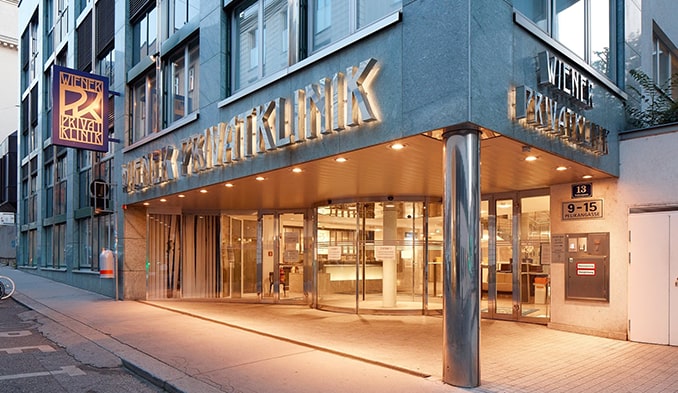-
What is the nature of hernia condition?
The essence of the hernia is expressed as a weak area in the groin and abdominal wall. Inguinal, umbilical, femoral and incisional hernia are the most common types. It is necessary to seek a specialist urgently when the intestines have become dislocated or stuck.
-
What are the specifics of an inguinal hernia?
In most cases, an inguinal hernia manifests by swelling in the groin area caused by the penetration of parts of the intestine through the inguinal canal. Most often it becomes evident when performing strenuous physical activity or sports.
-
Which methods are available in modern surgery for the treatment of inguinal hernia?
There are two different treatments available lasting approximately 60 minutes:
- TAPP surgery, a transabdominal preperitoneal plasty technique. The surgical method of this technique is minimally invasive. The hernia is operated on using a camera and multiple small skin incisions, then placed in a plastic mesh. The patient is under general anesthesia.
- A Lichtenstein technique operation in which an incision is made in the skin in the groin area to insert a plastic mesh. Usually the patient is under general anaesthesia, but sometimes spinal anaesthesia is also needed by cross-stitch.
-
How to recognize an umbilical hernia?
An umbilical hernia is seen as a spherical bulge as the connective tissue around the umbilicus is squeezed by the organs. It is possible for it to appear as early as birth, but in these cases it is most likely to regress naturally. When adult patients are affected, surgery is often performed.
-
What are the surgical treatment options for abdominal hernias?
Each of the surgical techniques aims to best treat the hernia by using plastic mesh and minimizing the size of the scar. This, in turn, helps reduce discomfort and pain after surgery.
The first method is direct closure. Its duration is about 45 minutes. When the defects are less than 1 cm in diameter, the technica is used without reinforcement with mesh.
Another technique used is preperitoneal navel meshplasty (PUMP or vrTAPP). In this case, the duration of surgery is between 60 and 90 minutes. For small hernias larger than 1 cm, the PUMP technique is the most applicable, in which the plastic mesh is placed between the abdominal wall and the peritoneum, with an overlap of 2 to 3 cm outside the flaccid zone. This limits the risk of complications such as adhesions with organs in the abdomen. One option for performing the surgery is through a skin incision, while the other uses a DaVinci robot.
Techniques such as (e)MILOS or TARUP are also used, which are most suitable for larger abdominal hernias and are usually performed within 120 - 200 minutes. In these, the length of the skin incisions is no greater than the diameter of the hernia, and the plastic mesh is placed under the abdominal muscles. It is performed using the DaVinci robot or laparoscopically.
-
What is an incisional hernia?
Incisional hernia is a complication that often occurs after surgical procedures in the abdomen. It depends on the type of initial procedure, other complications after surgery, and how the abdominal wall is closed. After a laparotomy is performed, there is a 10-20% chance of scarring occurring in the patient.
-
What are the possible methods for the treatment of incisional hernias?
- Technique "sublay" by Rives - Stoppa or (e)MILOS, or TARUP (180 min.)
"Sublay" The technique can be performed conventionally open, robotically with DaVinci, or laparoscopically, and the plastic mesh is localized through a skin incision under the muscle.
- Posterior component separation - Novitzky (r)TAR technique (170-350 min.)
During the separation of the posterior component, using a skin incision, the plastic mesh is placed over the lateral abdominal muscles. The expansion of the mesh weight as well as the reduction of tension are a huge plus with this type of technique.
The posterolateral plastic mesh in TAR is placed between the abdominal skin (peritoneum), the rectus abdominis muscle (rectus abdominis) and the lateral abdominal muscle (transversus abdominis). Because of the enlarged compartment incision, the posterior rectus is more easily positioned, and so is the "linea alba" (midline). This method also has the possibility of being performed in a conventional, laparoscopic or robotic way (with DaVinci).




